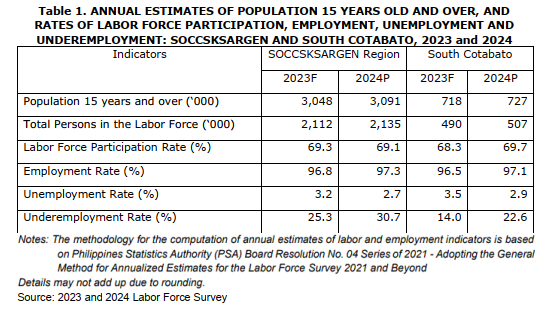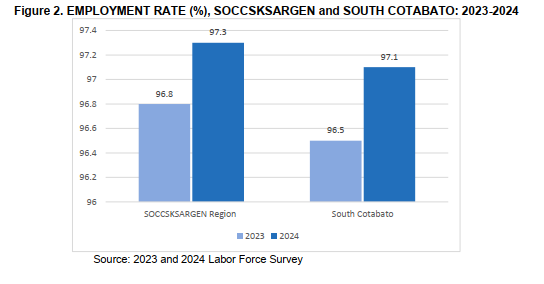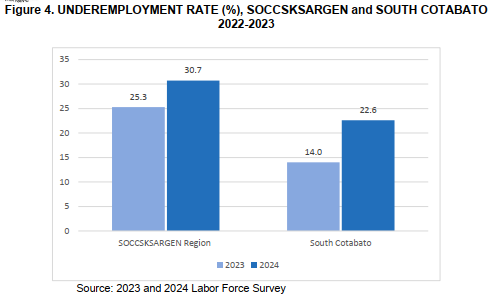The Labor Force Participation Rate (LFPR) represents the proportion of the population aged 15 years and over who are contributing to the production of goods and services. The LFPR in South Cotabato rose to 69.7% in 2024, up from 68.3% in 2023.

Of the estimated 727 thousand population aged 15 years and over in the province in 2024, around 507 thousand were part of the labor force, both the employed and unemployed. This represented 23.7 percent of the total labor force in the SOCCSKSARGEN Region. The province’s LFPR increased from 68.3 percent in 2023 to 69.7 percent in 2024. In contrast, the region’s LFPR remained relatively stable, with a slight dip from 69.3 percent to 69.1 percent over the same period. (Table 1)

The Employment Rate (ER) in South Cotabato increased from 96.5 percent in 2023 to 97.1 percent in 2024, mirroring SOCCSKSARGEN Region’s upward trend, which rose from 96.8 percent to 97.3 percent. This improvement may be attributed to the gradual recovery of local industries, sustained government employment programs, and increased economic activity across key sectors such as agriculture, services, and manufacturing.

The Unemployment Rate in South Cotabato dropped from 3.5 percent in 2023 to 2.9 percent in 2024. In the same period, SOCCSKSARGEN Region also posted a decrease, from 3.2 percent to 2.7 percent. (Figure 2)
Despite lower unemployment rates for both the region and South Cotabato, the need for more sustained local action remains. Improving job matching, supporting small businesses, and expanding skills training can help create more stable and inclusive employment in the province and the region as a whole.

Underemployment Rate in South Cotabato rose from 14.0 percent in 2023 to 22.6 percent in 2024, reflecting a similar trend in the region, which increased from 25.3 percent to 30.7 percent over the same period. This maybe attributed to limited full-time job opportunities, a rise in part-time and seasonal employment, particularly in agriculture and informal sectors, and a mismatch between workers’ skills and job requirements, among others. (Figure 3)

Note: Annual 2024 estimates were based on the final estimates of January 2024 LFS and preliminary estimates of February, March, April, May, June, July, August, September, October, November, and December 2024 LFS.

